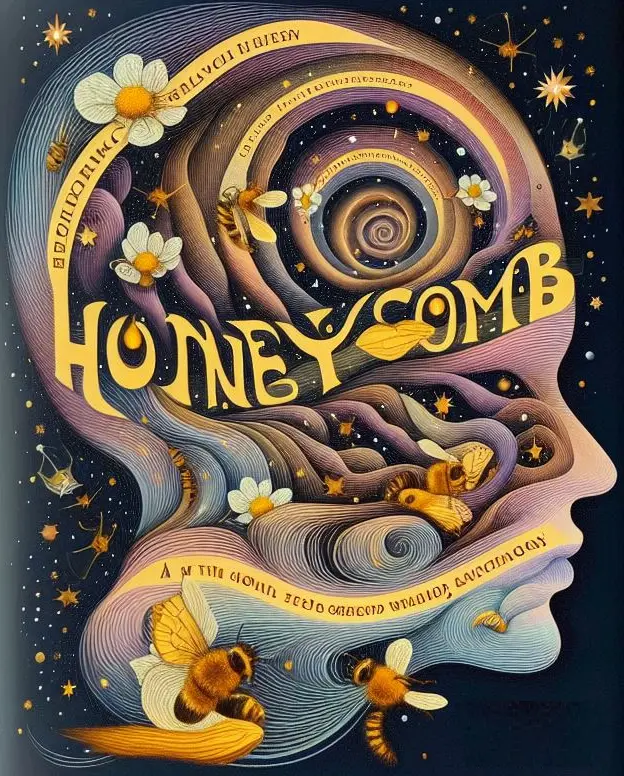Free Book: Discovering Dorothy Richardson’s Daring Stream of Consciousness in Honeycomb
I must admit I was a bit late to the party when it comes to discovering the brilliant Dorothy Richardson and her pioneering stream of consciousness novel, Honeycomb. But better late than never, as they say!
I tore through this slim but powerful volume in just a couple of delightfully immersive reading sessions. Despite being published over a century ago in 1917, Richardson’s innovative writing style feels strikingly modern and ahead of its time. From the very first pages, I was utterly captivated by her fragmented yet poetic depiction of the inner world of her protagonist, Mirian Henderson.
For those unfamiliar with the premise, Honeycomb introduces us to Mirian as a young woman coming of age in early 20th century London. But this is no mere bildungsroman or straightforward narrative of self-discovery. No, Richardson takes us on a dizzying dive into the churning undercurrents of Mirian’s consciousness – her observations, memories, doubts, and kaleidoscopic emotional experiences are rendered in exquisite, impressionistic detail.
I found myself utterly entranced by Richardson’s lyrical, free-flowing prose and her ability to illuminate the most fleeting and nebulous of human experiences with startling clarity. One moment you’re submerged in Mirian’s swirling recollections of her childhood, the next you’re pulled into the rush of her sensory perceptions as she navigates the cacophony of London’s streets. All the while, Richardson seamlessly interweaves profound insights into the societal constraints and double standards facing young women of the era.
From the outset, it’s strikingly evident that Mirian is a keen observer, an introvert hyper-attuned to the subtleties of human behavior and societal mores that so often go unnoticed or unspoken. Through her eyes, we bear witness to the insidious ways patriarchal norms and expectations circumscribe the lives and psyches of women. Richardson doesn’t preach or editorialize, but allows Mirian’s unvarnished impressions and hard-won self-awareness to speak volumes.
One particularly poignant scene that has stuck with me vividly is when Mirian attends a dance and is struck by the realization that the young women present are all being scrutinized, judged and assigned value based solely on their physical appearances and perceived marriageability. The young men, by contrast, are free to move through the world unfettered, their worth measured by other metrics. It’s a subtle but searing depiction of the sexual double standards of the era.
Throughout Honeycomb, Richardson returns again and again to exploring the tension between Mirian’s yearning for independence and self-actualization, and the immense societal pressures compelling her to seek fulfillment through marriage and domesticity. You can feel Mirian’s internal tug-of-war, her flashes of rebellious defiance intermingled with moments of insecurity and self-doubt about bucking tradition.
What makes Richardson’s portrayal so captivating is that she doesn’t offer any easy answers or tie things up neatly with a bow. Mirian’s journey of self-discovery is open-ended, her identity still very much a work-in-progress by the novel’s close. And that’s precisely what rings so true – the process of “finding oneself” is rarely linear, but rather an ongoing negotiation between our inner selves and the external forces that shape us.
On a technical level, I was in awe of Richardson’s dexterous command of stream of consciousness narration. She was pioneering this novelistic technique years before her male counterparts like James Joyce and Virginia Woolf were experimenting with it. Richardson’s prose has a dreamlike, mercurial quality that somehow still manages to feel grounded and authentic to the rhythms of human consciousness.
Her sentences unfurl with the fluidity of watercolors, each word and phrase bleeding into the next in lush, evocative brushstrokes. Yet for all their impressionistic beauty, Richardson’s words carry a visceral, emotional punch that leaves you reeling. I frequently found myself having to stop and catch my breath, so vividly had she rendered some piercing insight or gut-wrenching memory.
n many ways, Honeycomb is the perfect embodiment of the old writing adage, “show, don’t tell.” Richardson is the consummate observer, inviting us to peer directly into the whirlwind of Mirian’s inner life rather than having experiences relayed to us secondhand. It’s an intimate, immersive form of storytelling that demands active participation from the reader to piece together meaning from the fragmented impressions.
And what richly rewarding work it is to inhabit Mirian’s psyche! With each turn of the page, I found myself becoming more attuned to the nuances of Richardson’s prose, the ebb and flow of her stream of consciousness style. Phrases and images that initially seemed inscrutable would suddenly click into focus, their resonance amplified by the echoes of earlier motifs and memories. It’s a reading experience that forces you to slow down, to savor the language, and ultimately, to view the world through Mirian’s finely calibrated lens.
Part of what makes Honeycomb so groundbreaking is that in giving such unvarnished insight into a young woman’s inner world, Richardson was offering readers something radically new. Prior to her novel’s publication, the prevailing literary conventions tended to treat female characters as ciphers, their personalities and motivations flattened into simple archetypes or plot devices. But Mirian is fully, vibrantly realized as a complex human being – contradictory, uncertain, achingly self-aware yet still grappling to understand herself and her place in the world.
You can sense Richardson’s own intimacy with the material, her profound understanding of the paradoxes and constraints shaping young women’s lives in that era. While little is definitively known about her personal life, one can’t help but wonder how much of Mirian’s inner turmoil was informed by Richardson’s own experiences coming of age at the turn of the century. There’s a rawness, a profound interiority to the narration that feels deeply lived-in.
This is perhaps why, despite being over a century old, Honeycomb still feels so startlingly modern and relevant. The questions of identity, independence, and self-actualization that Mirian grapples with are universal and timeless. Richardson tapped into something elemental about the perpetual renegotiation between our inner selves and the external forces that seek to define and confine us.
In giving such an unvarnished window into one young woman’s psyche, Richardson doesn’t merely hold up a mirror to her own era, but reflects back something much broader about the fullness and complexity of human experiences too often oversimplified or ignored, particularly for women. It’s a testament to her literary genius that over a century later, readers still feel witnessed, understood, and profoundly impacted by the impressionistic rendering of Mirian’s inner life.
On a personal note, I can’t begin to express what a revelation it was to discover Richardson’s work and her pioneering role in the modernist canon. As a reader who has always been drawn to experimental, boundary-pushing fiction, Honeycomb was a bracing reminder that the innovations we often associate with male writers like Joyce had equally daring (if not more so) forebears in authors like Richardson.
Too often, the narratives we’re taught about literary movements and canon formation tend to minimize or erase the vital contributions of women writers. But Richardson’s novel stands as a thrillingly subversive rebuke to that tendency. With its fearless psychological interiority and avant-garde style, Honeycomb staked out new territory in the art of fiction writing, exploding conventions and clearing space for other marginalized voices to follow.
In many ways, you could view Richardson’s novel as a sort of artistic and ideological honeycomb itself – a daring structure built through radical processes, containing within its cells generations of creative cross-pollination and nurturing new possibilities for expression. I’m endlessly grateful to have discovered this brilliant work and look forward to further immersing myself in the rest of Richardson’s masterful pilgrimage of the solitary soul.
So if you’ll excuse me, I must bid you farewell for now. I have a date with the next book in Richardson’s series, and I can’t wait to once again lose myself in her shimmering, subversive prose.
Subscribe to our newsletter and get two free novels!



